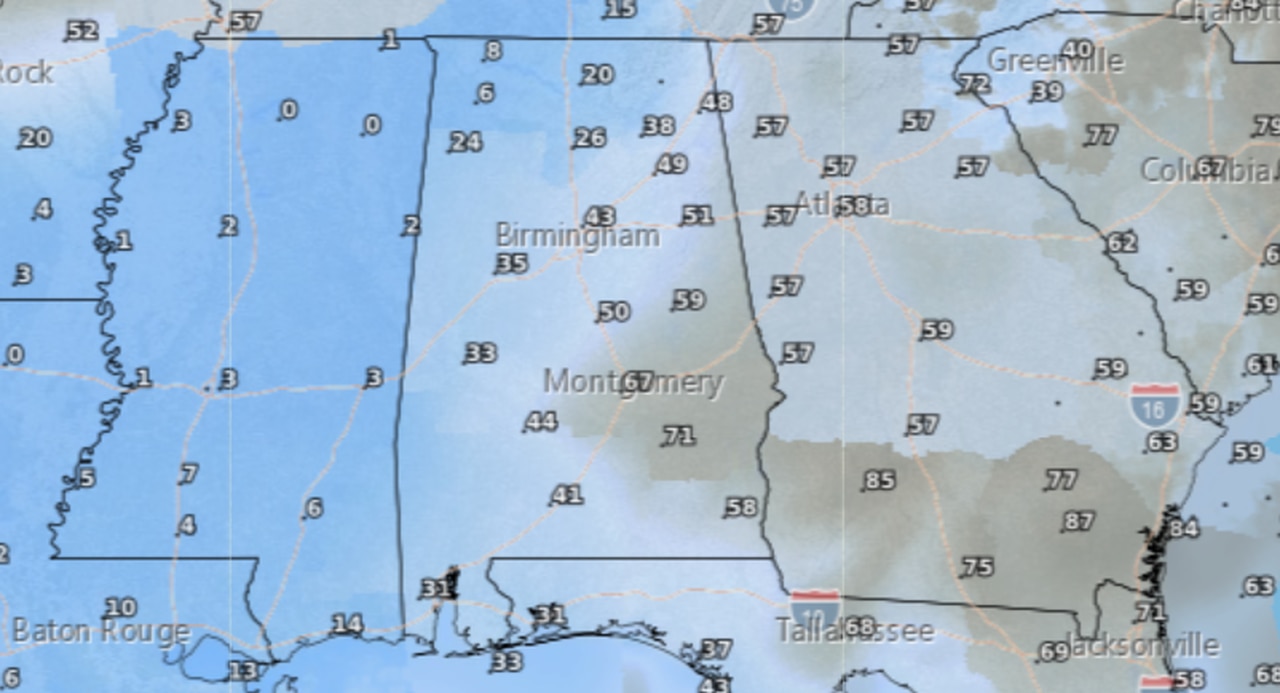Eclipse 2023: Will clouds move out in time? Where are Alabamaâs best viewing spots?
Clouds were hanging tough around parts of Alabama on Saturday morning with an annular solar eclipse fast approaching.
An annular solar eclipse happens when the Moon moves between the Earth and the Sun and temporarily blocks sunlight from reaching the Earth.
Areas in the direct path of the eclipse will see a “ring of fire” effect, where the Sun is totally obscured except for around the edges.
In the continental U.S. the Oct. 14 annular eclipse will begin in Oregon at 11:13 a.m. CDT, track southeastward across the West, and end in Texas at 12:03 p.m. CDT.
Alabama isn’t in the direct path of the eclipse but will get to see 50 to 70 percent of the Sun obscured by the Moon.
Here’s another look at the Oct. 14 eclipse.
The big question is if the clouds obscuring the sky in parts of Alabama will move out in time.
Some in Alabama were already seeing sunshine, and clouds were expected to clear out from west to east through the day today.
But they may not move out in time for some — especially those in eastern Alabama.
Here is the National Weather Service’s forecast for cloud cover at noon today (Saturday), when the eclipse is expected to reach its maximum point for those in Alabama. The numbers indicate how much of the sky could be obscured by clouds around that time:

Here is the forecast for cloud cover for noon Saturday, Oct. 14, when a solar eclipse is expected to reach its peak for sky watchers in Alabama. The numbers show how much of the sky could be obscured by clouds.
Experts urge eclipse-watchers to not look directly at the Sun but use special eyewear. Here is where to find glasses if you don’t have them.
Here are some maximum obscuration times for Saturday’s eclipse:
* Birmingham: 12:02 p.m.
* Enterprise: 12:07 p.m.
* Huntsville: 11:59 a.m.
* Mobile: 12:05 p.m.
* Montgomery: 12:04 p.m.
* Muscle Shoals: 11:58 p.m.
* Tuscaloosa: 12:01 p.m.
See an interactive map of eclipse times here.
Clouds not making the eclipse visible where you are? Here’s where to see a livestream.
